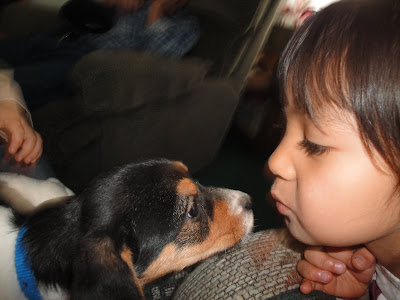Ever since our bunny, Wubzy, died, I told myself I will never get a bunny anymore because it was hard losing a pet that we truly loved. But then we saw these two lionheads rabbits at a tractor supply and we fell in love with them right away. We named them Plumley and Pippin.
These lionhead rabbits have a very soft hair and just like our beloved Wubzy, they too are fun to have around the house. They love to hop around the house and they are now getting braver everyday. They used to be scared around the dogs but not anymore.
Since lionhead is a different breed from what we had before, I did some research about them on how to take care of them and found this article to be very helpful.
According to the article I read, the cost of lionhead is between $20-$125 . We got ours for $12 each. My husband is planning to build a new bunny house for them come Spring, just like what he built for Wubzy and Matilda before.
I can't wait to see them run around in the backyard when we get our fence up. Fence is our new project goal this summer. I really want a fence around our backyard because we have dogs and now these bunnies. Caring for the dogs is easier when you have a fence around the yard.
My kids just love these two new fur babies. I have learned that I need to brush their hair everyday because if left unattended, the knots on their hair can cause pain and infection.
One thing I learned is that, both Plumley and Pippin loves apple and lettuce. We give them fresh hay regularly and of course their regular diet is pellet.
They love to cuddle which the kids really like. When they come home from school, they immediately take them and put them in their lap or watch them run around.
The article said that the life span of a lion head is up to 8 to 10 years depending on how you take care of them.
Plumley is the male and he has big brown eyes.Pippin on the other hand have small eyes.
Here's a brief history of a lionhead rabbit according to the lionheadrabbit.com website.
Lionheads were first created in Belgium by crossing two different dwarf sized breeds, although the debate of which two breeds were used, exactly, has left many scratching their heads in wonder. However, in doing the specific breed-crossing (quite possibly being that of a Swiss Fox and Netherland Dwarf) that was used, there was a gene mutation that occurred, causing this new breed to consistently produce a line of wool around the head region, and often times the flanks as well. This mutated gene is now referred to as the “mane” gene.













